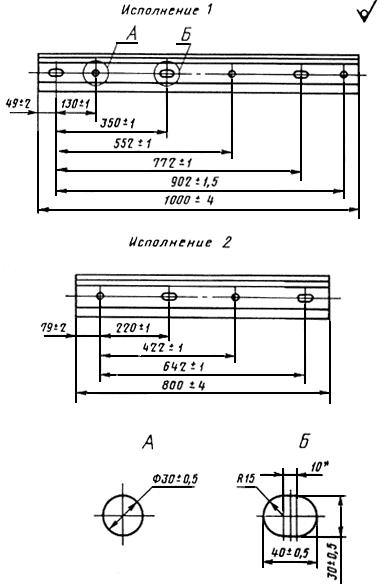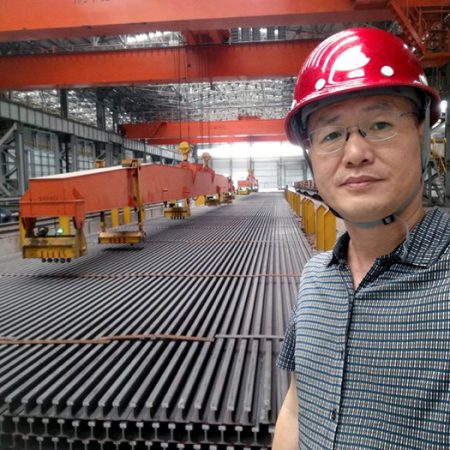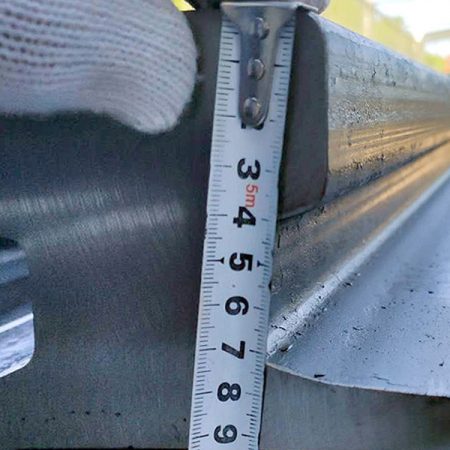GOST 1R65 fishplate is a type of fishplate designed and specified according to the GOST (Russian State Standard) 1R65 standard. Fishplates are metal bars used to join two railroad tracks together at the rail joint. The GOST 1R65 fishplate is specifically designed for use with Russian standard rail profiles with a height of 152 mm and a base width of 160 mm.
The detailed specifications of the GOST 1R65 fishplate are as follows:
Material: Steel, usually of grade 55#
Length: 1000 mm
Width: 45.5 mm
Height: 130 mm
Hole diameter: 30 mm
Weight: Approximately 29.5 kg
Standard compliance: GOST 1R65-75
These fishplates are designed to be used with rails of the same standard and are manufactured with precise tolerances to ensure that they fit the rails correctly and provide a secure joint. They are commonly used in railroad construction and maintenance projects in Russia and other countries that use the Russian standard rail profiles.
The GOST 1R65 fishplate is a type of rail joint commonly used in Russia and other countries in the former Soviet Union that use the Russian rail standard. It may also be used in other countries that use Russian rail profiles or have adopted the GOST standard for rail joints. Therefore, it is primarily used in countries that have a history of using Russian rail standards or have adopted them for their rail infrastructure.
The GOST 1R65 fishplate is used for joining two rails together in a railway track. Here are the basic steps to use it:
- Make sure that the two rail ends to be joined are clean and free of any debris or rust.
- Place the two rails end to end, ensuring that they are properly aligned.
- Slide the GOST 1R65 fishplate over the two rail ends so that it is centered and covers the joint between the two rails.
- Insert the fish bolts (also known as fishplate bolts) through the bolt holes on the fishplate and the rail ends. Make sure that the bolts are tightened evenly and not excessively, which can cause damage to the fishplate or the rails.
- Check the joint for any gaps or misalignment between the rails. If necessary, adjust the bolt tightness to ensure a tight and secure joint.
- Once the joint is properly installed and tightened, it should be inspected regularly to ensure that it is still in good condition and does not require any maintenance or repair.

Pad 1R – 65 is designed to be used as a transition pad for rails of a similar type, designed for spike and spring rail fastening of rail joints of R-65 types.
For joining the R-65 and R-75 rails, six-hole linings 1R-65 1000 mm long, and four-hole linings 2R-65 800 mm long are used.
R-65 rails are jointed with each other using a 1R-65 lining or 2R-65 lining, which is attached to the inside and outside of the rail using M24x160 butt bolts.
We can supply the international standard flat bottom rails as below, if you need it, please feel free to ask us:






